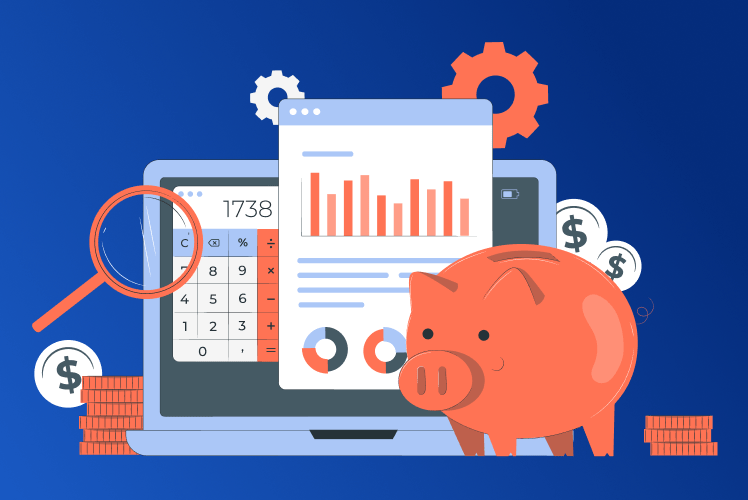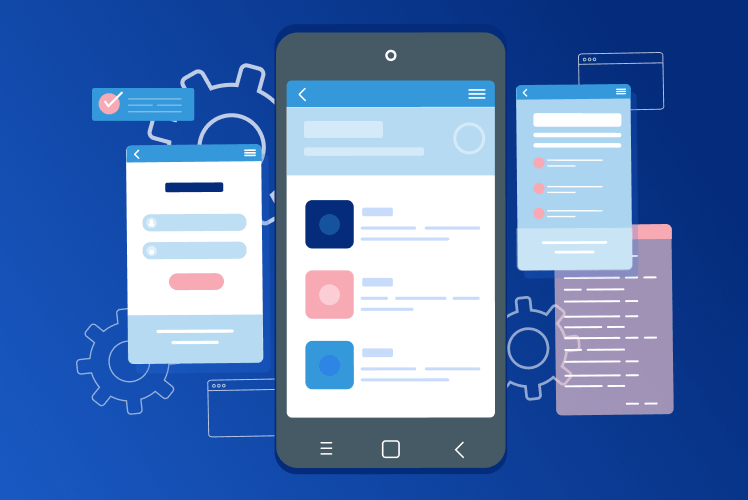Table of Contents
If you are reading this, you are probably wondering how to make your landing page convert more visitors into leads and what causes your visitors to leave the website. No worries – we got you covered.
When working on a landing page, you need to keep in mind dozens of small things that have a big impact on visitors’ behavior. In this article, we will try to explain what makes a landing page so important and how to increase its conversion rate.

What is a landing page?
One of the biggest misconceptions about a landing page is that it’s the same as a homepage. Is it really so and how does a landing page differ from a homepage?
A homepage is basically the core of your website. It has your root domain (nameofyourbusiness.com), contains all the links to other sections of your website, and gives a detailed and informative overview of what your business does and what you offer. In a nutshell, a homepage serves as an introduction and explains who you are and what you do.
A landing page addresses one issue/question/need only and encourages a user to complete a conversion. Note that a website can have multiple landing pages or a company can design a standalone landing page specifically for a certain user query. Another important thing to remember is that a homepage can actually be a landing page if it contains a clear CTA and serves a specific purpose.
So how do you create a truly converting landing page? Below we listed the best practices for the landing page design and the main page areas to pay attention to.
On-page content
The main goal of on-page content is to demonstrate the value of your product or service and to persuade visitors to take action. Therefore, when working on a landing page, you need to pay double attention to what kind of visual elements you use and how persuasive and captivating your copy is.
Talk about value, not about benefits
The most common thing that many business owners do when working on a landing page is listing product benefits in an attempt to appeal to visitors. However, this does not usually work as planned – simply because visitors do not understand how these benefits relate to them.
You can write “processes automation” while describing an app or you can say “saves your time up to 70%”. And it’s more likely users will prefer the latter option because it appeals to their personal problems and offers a solution.
The point here is that your listed benefits should not be impersonal. Instead, you should clearly state how they help a user solve their particular problem.
Add a video
It’s nothing new that a video added to your page significantly boosts engagement and conversions. There are several reasons how a video can benefit you:
- Explains your product in simple words;
- Adds entertainment (which is a great conversions trigger);
- Directly calls to action;
- Highlights the benefits of your product or service.
One of the most important questions about a video is its length. Gone are the days when a video was 2-3 minutes long (or even longer). Today, users are surrounded by information from multiple sources 24/7 and they don’t want to spend too much time on a single ad. Hence, you need to make your video short and clear – a minute or 90 seconds should be more than enough.
Add testimonials
Users rely heavily on other people’s opinions and reviews and that’s a fact. Use it to your advantage and include testimonials from your clients on a landing page.
Reviews from real people are a great tool to boost trust in your product. A piece of advice though: do not try to filter the reviews to make your product look “perfect”. If there is a review that contains both positive and negative comments, it’s okay to leave it because it looks more real to readers.
Make the copy engaging and conversational
Many people think that a copy to promote conversions is the same as a marketing copy. However, they are not the same. A “marketing copy” is intended to describe the benefits of a product and to make it look as good as possible. A copy used to promote conversions is more conversational, less formal, and appeals to a user by talking about their interests, problems, and ways to resolve them.<
So what are the features of a good converting copy? Here is a quick checklist:
- Conversational: instead of a polished marketing copy, a conversational copy makes an impression that you are talking to a person sitting next to you. Such a copy makes the reader want to actually respond to it.
- Structured: the copy has to be well-organized in paragraphs and to contain all necessary headings and subheadings. This is important because 1) it becomes easier to read and 2) it allows a reader to immediately jump to a section of interest.
- Personalized: the copy should “communicate” with the reader instead of pushing the product offer.
- Valuable: it should inform the reader that you understand their pain points and know how your product can resolve them.
We highly recommend taking the time to review the copy and test it with real users in order to make it truly compelling and converting.
On-page navigation
Another aspect that heavily impacts the conversion rate and the users’ behavior is on-page navigation. While some website owners overlook it, the landing page navigation must be carefully planned out and implemented in correspondence with the intended user flow.
Do not impose your opinion
Even though you might suspect how your users will behave, in reality, they might behave differently. This is why it’s important to get rid of automated elements (i.e. carousels with banners) and let users decide what they want to do on your page.
It is important to note that you can add visual elements that will help a user make a decision. Just don’t overdo it and make sure the elements do not push but assist.
Remove misleading navigation
Since you want your landing page to convert the users, you don’t want them to get distracted or leave the page. This leads us to another important point – remove misleading navigation from your landing page.
Examples of such navigation are:
- Links to other pages;
- CTA buttons with different actions (i.e. “Start a free trial” and “Learn more”;
- Misleading copy (i.e. “see page X for more information).
If you leave a link to another page or if you encourage the user to check out other pages before completing an action, chances are high that they will do so but will never come back. This is why it is so important to keep the landing page clear from any distractions.
Use directional clues
We’ve said before that it’s not recommended to impose your opinion – but what if you really need to guide a user towards a certain point and/or action? In this case, directional clues will be your lifesavers.
A directional clue is a subtle way to drive one’s attention to a certain area of a page without directly saying so. There are two types of directional clues: explicit and implicit and both are great.
An explicit directional clue is pretty obvious: for example, it can be an arrow pointing at an area that needs the user’s attention. An implicit directional clue is much less obvious and usually comes in a form of highlighting a certain element or making it stand out with its color and size. In this way, you still draw the user’s attention towards the needed element but it’s much less noticeable.
Both explicit and implicit directional clues are great as they do no push the users but rather guide them toward the right direction (and the right decision).
Conversions
When it comes to completing a conversion, there are many factors that impact one’s decision. Depending on how well you thought out the landing page and how well it’s organized and designed, a user will either make it or break it. Let’s have a look at a few important things that have a heavy impact on conversion completion.
Focus on a single goal
As mentioned before, a landing page is designed to persuade a user to complete a single and specific goal. Therefore, you should clearly define and outline this goal before designing a landing page – otherwise, you will confuse your visitors and will have a significant drop in conversions.
For example, your goal is to persuade users to fill in a form. Thus, you need to promote only this action on the landing page. The page should not encourage users to complete any other action, such as signing up for a newsletter, buying a sample, becoming a member, etc. If presented with too many options, a user will easily get confused and leave – and this is exactly the opposite of what you strive for.
KISS
It goes without saying that your landing page should be a chef’s kiss in terms of content and navigation. But KISS also stands for Keep It Simple, Stupid – an important principle that you should follow.
A big turnoff for users is the requirement to complete a complex action (or several actions) in order to accomplish a user goal. If a user has to create a user profile in order to get access to your free materials, this is an example of a complex action. Lengthy filling of the form is also an example of a complex action: when a user has to fill in multiple and not so important fields.
Therefore, keep everything as simple as possible and enable users to complete an action in a quick manner that involves a minimal number of steps. Users don’t want to waste their time going through a lengthy form or a complex process. Thus, always try to minimize the number of steps a user has to take and make it as simple for the user as possible.
Do A/B testing
Last but not least – always do A/B testing of your landing page. The testing will allow you to test your page with real users and see how well it works and what doesn’t work and needs replacement.
A/B testing eliminates guesswork and helps you understand what works for your audience. Thus, make sure to test all page elements and do final testing before the page launch. In addition to actual A/B testing, many testing tools also have a useful Autopilot Mode feature. This feature is used to immediately respond to the conversion rate drop – if it happens, the autopilot mode will send the traffic to your best-performing pages in order to save it.
Here is a list of the most popular A/B testing tools that you can use for your landing page analysis:
- Google Analytics and/or Google Optimize;
- Optimizely;
- VWO (a budget-friendly version of Optimizely);
- Convertize;
- HubSpot.
All these tools come with a list of unique and valuable features (i.e. multivariate testing, visual editor, split URL testing, etc.) so choose the one that will be the most suitable in terms of its pricing and functionality.
Conclusion
A landing page is a powerful conversion tool that can attract and retain your potential leads. At the same time, it’s easy to go wrong even with the smallest on-page elements. Thus, always make sure to do preliminary analysis, do not forget about market research, and always create a user flow before getting down to the page design. This kind of preliminary work will greatly save your time in the future and will help mitigate the majority of possible risks and mistakes.



Comments